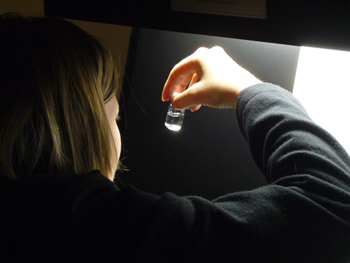New Guidance for Visual Inspection Available
As an industry, we have been performing 100% visual inspection for visible particles in parenterals for more than 70 years. Yet, during much of this time, there has been a lack of clear guidance, or harmonized scientific approach, for particulate and physical defects. This lack of guidance has led to a crescendo of US FDA Form 483s, Warning Letters, and particulate-related recalls over the past ten years. Without defined FDA or industry guidance, there has been significant variation in the individual expectations of regulatory field agents and defect control practices across companies.
Much of the problem can be attributed to the dearth of written guidance and the nebulous terms “essentially free” or “practically free” from visible foreign particles, which had been the standard (with variable meaning) until August 2014 when USP <790> Visible Particulates in Injections became official.

At the turn of the 21st century, PDA chartered its Visual Inspection Task Force and created the Visual Inspection Forum to focus on periodic benchmarking surveys and the in-depth study of inspection practices and particulate control. In 2009, USP established an expert panel, including FDA representation, that took this collective body of information and developed a definition of the minimum requirements necessary to declare a batch of product “essentially free” from visible foreign particles. As of March 1, the pharma industry finally has comprehensive guidance in the form of USP <1790> Visual Inspection of Injections, which becomes effective in August 2017. In addition, the PDA Task Force for Difficult to Inspect Parenteral Products has completed a new technical report with essential information on formulations or container systems that require supplemental destructive testing and a robust lifecycle approach to assure batch quality.
With the issuance of USP and PDA best practices and other recent publications, we can harmonize the parenteral industry’s approach for the fundamentals of inspection and subvisible to visible particle control. Indeed, we are finally emerging from the past to adopt common practices to inspect for, and control, particulates. This harmonization in our industry will not happen overnight, however; it will require each organization to develop both short- and long-term action plans to achieve this goal.
The 2017 PDA Visual Inspection Forum is coming up later this year. This meeting will provide information on the guidance documents mentioned here as well as perspectives on risk assessments for particulate matter. FDA representatives will be on hand to offer their views, and case studies on particulate matter and defect control will be presented. Consider attending to stay current on this important regulatory topic.
Learn more about the 2017 PDA Visual Inspection Forum and related PDA Education courses.


